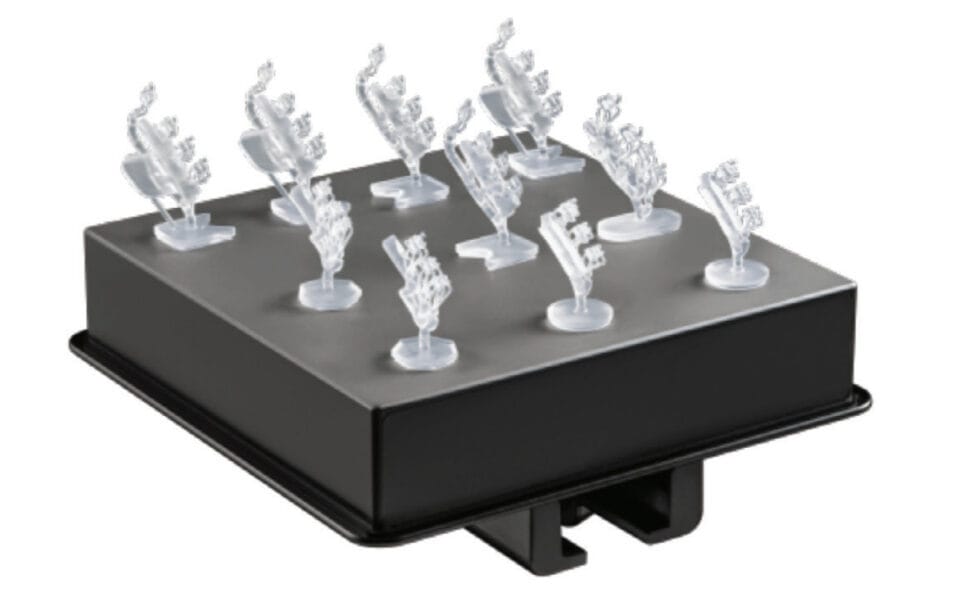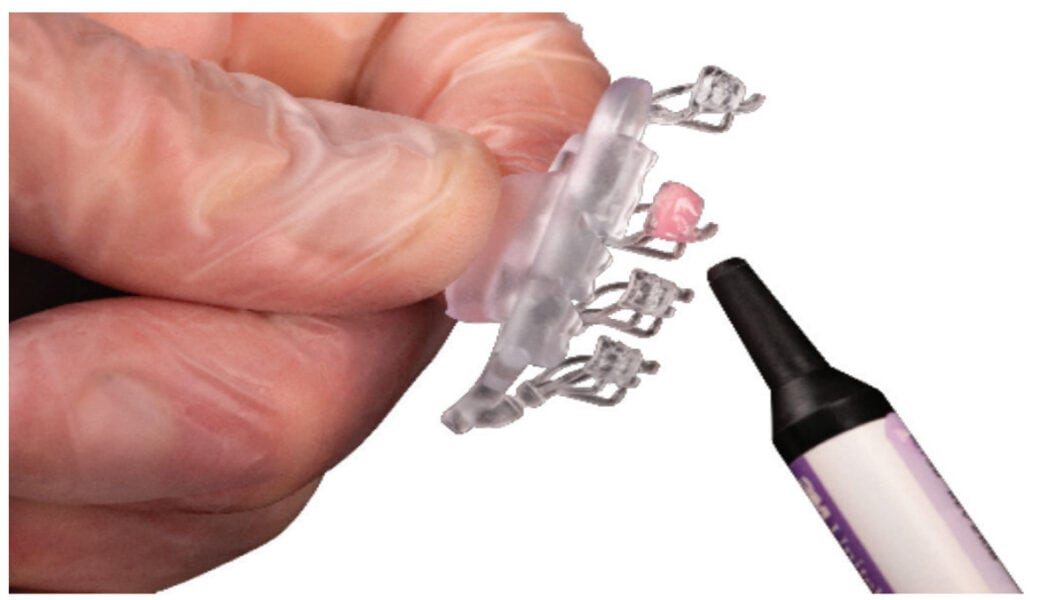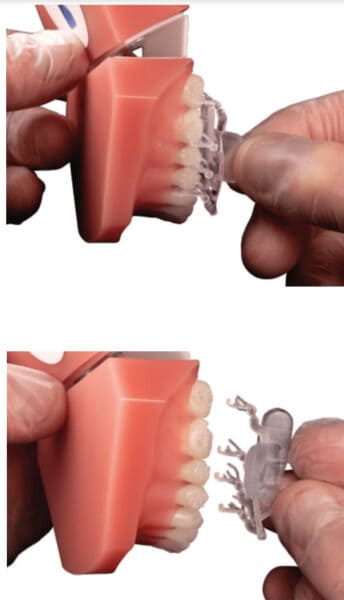Dr. James “Jep” Paschal talks about trayless indirect bonding and its benefits.
Dr. James “Jep” Paschal describes his experience with trayless indirect bonding
Perhaps like me, many of you have tested IDB over the years but ultimately decided against it. I have been testing IDB and fully customized IDB systems for close to 20 years now. While many of these devices were clinically viable, the lag time between a commitment to start and initial bonding, the inconsistency of the bonding process itself, and the overall cost always proved to be hurdles too significant to overcome.
Recently my stance has changed. The first time I saw the appliance called Monolithic™ by Braces On Demand™, I was captivated. The appliance is a fully customized bracket system that offers “trayless” indirect bonding. That means I get the visualization and feel of direct bonding with the accuracy and consistency of IDB without the challenges inherent to tray techniques.
Trayless indirect bonding is the answer to both the time-to-delivery dilemma and the cost hurdle, while providing a superior delivery system for a fully customized appliance. My team has been impressed with the ease of bonding that patients also appreciate. Everything fits exactly as it was prescribed and designed. The occlusal indexes and supports are easily removed, and we’ve had no debonds during bracket placement. We’ve never worked with an appliance that’s as problem-free and can deliver as quickly.
The brackets are 3D printed from a photocured polymer that is crystal clear; this gives them the durability required in the oral environment while also being safe for use on the lower arch without the risk of enamel wear. We have bonded a myriad of different esthetic brackets over the years and have never had a bracket look as transparent as this one does on the teeth. So far, they’ve been stain-free, something we do not typically see with other esthetic brackets.
How trayless IDB works
Traditional indirect bonding trays present a variety of challenges to adoption because they require an exacting bonding protocol to minimize bracket failures. Too much adhesive or primer, and you risk bonding the tray to the bracket or tooth. Too little adhesive, and you compromise the bond strength of the bracket to the tooth.
Monolithic replaces the tray with a custom bite registration structure (i.e., occlusal index). This placement structure is not merely a jig. It’s a one-piece, custom occlusal index with fully customized brackets precisely oriented to one another via a 3D-printed framework. Every unit is individualized to fit the facial contours and occlusal surfaces of each tooth so that each bracket slot is properly oriented in its ideal position based on the patient’s final digital setup that you approve. Once the segments are positioned intraorally, you have direct clinical access to the bracket. You can apply an ample amount of adhesive to fill the pad, seat the bracket against the tooth, clean up the flash, and visually inspect the bracket positioning before curing it (Figure 1). In this regard, the procedure has many of the familiar advantages of direct bonding.


There are distinct benefits to having direct visualization and access to each bracket. With this indirect system, my team and I can, for the first time, see that each bracket is properly positioned and seated on the tooth. With other IDB techniques, if the tray is not completely seated, or if a bracket shifts in its well, bracket placement is compromised and won’t be discovered until the tray is removed or later in treatment after the inaccurate placement is expressed.
With trayless indirect bonding, adhesive curing is faster and more consistent due to the translucent resin material and the direct access the assembly permits since no tray material hinders light transmission. Bonding times are drastically reduced, and there are significant efficiencies that could be gained when bonding can be delegated to clinical assistants. The advantages in multi-doctor practices would likewise be notable in terms of bracket placement accuracy and consistency.


The digital workflow
The digital workflow begins with the patient scan that’s uploaded to the DIBS AI® planning software platform integrated with Braces On Demand. You receive the initial setup within 24 hours of submission. After refining and/or approving the digital setup, the next step depends on whether you print your cases in-office or choose to have them printed for delivery. If you choose the latter, mail delivery will take approximately 1 week. In addition, you will receive a second set of appliances to serve as backup.
If you are 3D printing in-office on your Formlabs Form 3B or 3B+ printer, you will receive the .STL file within 24 hours of case approval. I have used several different printers in my office and have found the Formlabs Form 3B line of printers excel at providing both the accuracy and surface finish needed for manufacturing orthodontic brackets.
With in-office 3D printing, we can cut patient start times from commitment to bonding to approximately 1 week from the usual 4 weeks with other customized bracket systems. For those who choose to have cases delivered, you can reduce your commitment-to-start times to approximately 2 weeks. Doctors recognize the advantage of such an improved timeline, which capitalizes on patients’ enthusiasm at the outset of treatment.
Conclusion
Orthodontists recognize the significance of precise bracket placement: fewer wire bends and fewer repositioning appointments for easier and more timely case finishes — all of which improve efficiency and ultimately profitability. Those of us who have employed customized appliances can also attest to their benefits.
Trayless bonding combines these two vital aspects of orthodontic treatment into one appliance that is a boon to prompt bondings with a fully customized appliance. It fits seamlessly into our digital workflow. Moreover, the clarity of the brackets makes them beautiful on the teeth. The system can save significant doctor time during bondings, and for those looking to delegate the bonding appointment, it is a reliable technique for trained assistants to manage. It offers accurate, consistent, and fully visualized bracket positioning in a simple and convenient trayless delivery system that addresses the challenges of traditional IDB.
Digital indirect bonding and precise bracket placement are the focuses of this article by James Bonham. https://orthopracticeus.com/laboratory/digital-indirect-bonding/
Stay Relevant With Orthodontic Practice US
Join our email list for CE courses and webinars, articles and mores

 James “Jep” Paschal, DMD, MS, FACD, lectures to doctors, staff, and residents worldwide on the most advanced orthodontic trends, techniques, and technologies that improve patient care. He is also recognized as a leading expert on incorporating 3D printing into orthodontic practices.
James “Jep” Paschal, DMD, MS, FACD, lectures to doctors, staff, and residents worldwide on the most advanced orthodontic trends, techniques, and technologies that improve patient care. He is also recognized as a leading expert on incorporating 3D printing into orthodontic practices.
